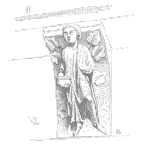
The Eyring Model for Accelerated Testing
Sometimes the reaction rate of a process relies on two stresses. For chemical reactions, temperature seems to influence the rate of the reaction. Yet, other stresses such as humidity or voltage may also play a significant role.
H. Eyring suggested a model that assumes the contribution of each stress on the reaction rate is independent; thus one could multiply the respective stress contributions to the rate of reaction.
The Eying model provides a means to account for the contributions of temperature and another stress when modeling the time to failure of select failure mechanisms.
The Eying Model General Form
The model includes the Arrhenius model for the temperature contribution, and an inverse power law term for another stress.
The general form of the model is:
$$ \displaystyle\large t=A\left( \frac{1}{S} \right)B{{e}^{{}^{{{E}_{a}}}\!\!\diagup\!\!{}_{kT}\;}}$$
Where
t is time (nominal product life)
A and B are constants related to the specific process being modeled
S is the applied stress
Ea/kT is the activation energy divided by Boltzmann’s constant and temperature in Kelvin
Note the stress, S, may be transformed any number of ways such as inverse, squared, or square root.
A generalized form of the model includes an interaction term to account for any interaction between temperature and the additional stress.
$$ \displaystyle\large t=A\left( \frac{1}{S} \right)B{{e}^{{}^{{{E}_{a}}}\!\!\diagup\!\!{}_{kT}\;}}\times {{e}^{\left\{ S\left[ C+\left( {}^{D}\!\!\diagup\!\!{}_{kT}\; \right) \right] \right\}}}$$
Where
C is another constant
D is a constant and represents the interaction term
Four Uses of the Eying Model
Nelson used the Eying model to model capacitor life using the natural log (ln) of the voltage stress.
Black modeled electromigration in aluminum conductors in VLSI and other microelectronics using temperature and current density.
Peck modeled failures of electronics epoxy packaging using temperature and relative humidity.
Zhurkov modeled the time to rupture of solids using temperature and tensile stress.
Summary
Finding the right model for our specific failure mechanism may take a literature search or it may require fitting some constants with the right model. Either way, there are ways to model most any failure mechanism, allowing you to translate accelerated test conditions to use conditions.
References
Glasstone, Samuel, Keith J. Laidler, and H Eyring. The Theory of Rate Processes;: The Kinetics of Chemical Reactions, Viscosity, Diffusion and Electrochemical Phenomena,. 1st ed. International Chemical Series. New York: McGraw-Hill, 1941.
Nelson, Wayne. Accelerated Testing: Statistical Models, Test Plans, and Data Analysis. Edited by S S Wilks Samuel. Wiley Series in Probability and Mathematical Statistics. New York: John Wiley & Sons, 1990.
Condra, Lloyd W. Reliability Improvement with Deisgn of Experiments. 2nd ed. Edited by Edward G Schilling. Quality and Reliability. New York: Marcel Dekker, 2001.
Zhurkov, S N. “Kinetic Concept of the Strength of Solids.” International Journal of Fracture 26, no. 4 (1984): 295-307.
 Ask a question or send along a comment.
Please login to view and use the contact form.
Ask a question or send along a comment.
Please login to view and use the contact form.
I am still preparing to CRE exam.
That’s great and I hope you are already able to apply what you’re learning to add value. cheers, Fred
The spelling of “Eyring” varies throughout this article, often appearin gas “Erying” which is incorrect.
Hi Allen, thanks for the note and besides the misspelling, also cleaned up some of the other grammer issues. cheers, Fred